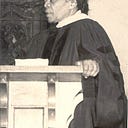History 101: Alice Freeman Palmer
In this series, History 101, we’ll explore some of the topics and questions we frequently discuss at the Charlotte Hawkins Brown Museum.
Who is Alice Freeman Palmer and why did Dr. Charlotte Hawkins Brown decide to name her school after her?
Alice Freeman Palmer was born in 1855 near Binghamton, New York. From an early age, she was a fast and motivated learner. She learned to read by age four and sat for the entrance exam at the University of Michigan at age 17. She was admitted and graduated in 1876. At the time, the University of Michigan was one of the most foremost universities willing to admit women. Upon her graduation, Alice Freeman began teaching in Wisconsin and Michigan, while also attending graduate school during summer breaks. After a few years of teaching, Wellesley College president Henry F. Durant offered her three different teaching positions in math and Greek. A need to help financial support her family forced Alice Freeman to turn down these offers initially, but by 1879 she was the History department head at Wellesley.
Upon Durant’s death in 1881, Alice Freeman became acting president of the college and was officially named President in 1882. During her time at Wellesley, Alice Freeman significantly raised the school’s academic standards and established a system to create preparatory schools around the country that would prepare students for college. She also founded the Association of Collegiate Alumnae (later renamed the American Association for University Women). Unusual for the time, Freeman believed that all women should obtain a college education and be able to support themselves, regardless of marital status.
Much to faculty and student dismay, Alice Freeman resigned her presidency at Wellesley in 1887 in order to marry George Herbert Palmer, professor of philosophy at Harvard University. Alice Freeman Palmer was a pioneer in women’s education and frequently lectured on the important of female academic advancement. As a national figure, she portrayed herself as a New Woman, and especially in Boston was seen as a “respected, financially independent, successful academic woman devoted to promoting women’s education.” She appeared in magazine and news stories and was requested for public speaking engagements. She returned to academia in 1890 to become the first dean of the University of Chicago.
So how did this pioneer in education meet Dr. Charlotte Hawkins Brown? As a young woman, Dr. Brown often babysat local children to make extra money. During one of these times, she was pushing a baby in a carriage through a park in Cambridge, Massachusetts while reading Virgil in Latin. By happenstance, Alice Freeman Palmer was in the park at the same time. She was struck by the young African American woman reading Latin and inquired as to where she attended school. After their brief interaction, Alice Freeman Palmer contacted Dr. Brown’s principal at Cambridge English High School. When Dr. Charlotte Hawkins Brown began looking for ways to fund her own college education, she wrote to Alice Freeman Palmer for assistance. Not only did Palmer fund Dr. Brown’s education at Salem State, but she also became one of the first major donors for Palmer Memorial Institute.
Unfortunately, Alice Freeman Palmer died of a heart attack at age 47 in December 1902, just two months after Dr. Brown had opened her school in Sedalia, North Carolina. Devastated by the loss of her friend, mentor, and benefactor, Dr. Brown officially named her school the Alice Freeman Palmer Memorial Institute in her honor.
